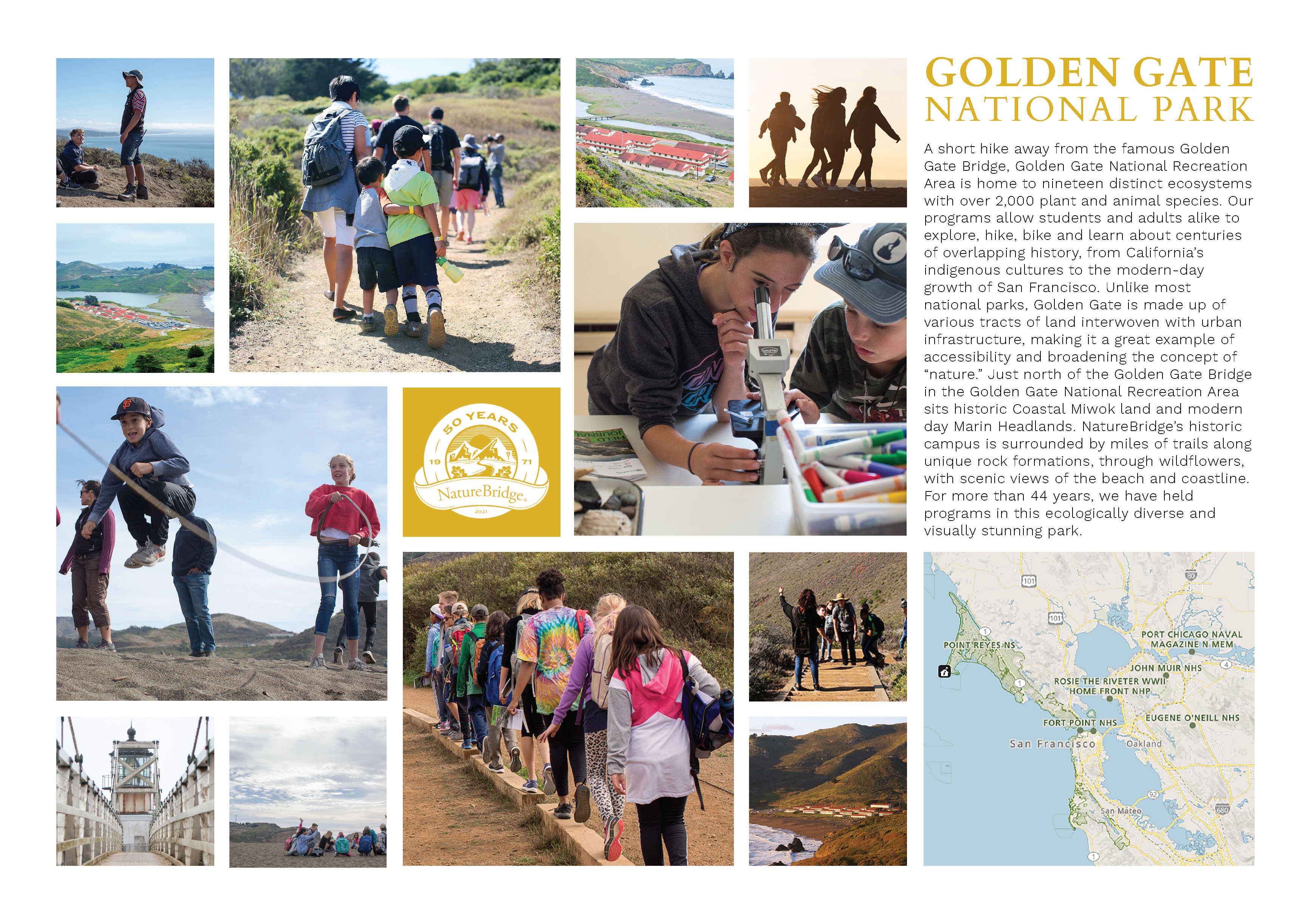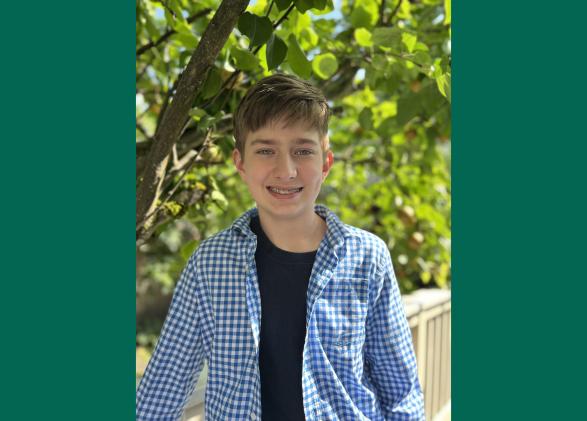Sense of Place Series: Welcome to Golden Gate National Recreation Area

What is Sense of Place?
All NatureBridge programs are structured so students develop a Sense of Place. Students connect with the place where their NatureBridge experience occurs and the people with whom they are sharing the experience. This creates a safe and comfortable environment that is conducive to learning and makes the experience relevant to students.
Welcome to… Golden Gate National Recreation Area
The Golden Gate National Recreation Area sits just north of the Golden Gate Bridge, enveloped by the majestic Marin Headlands. Its beaches, wetlands and coastal prairies boast a myriad of ecosystems and habitats to explore and opportunities to build meaningful relationships with the natural world. Hiking trails spiral along the coastline against an expansive backdrop of the Pacific Ocean. The rich diversity of land led to its classification as a UNESCO Biosphere reserve.
The Human Story
The Golden Gate National Recreation Area is on the ancestral and present day homelands of the Coast Miwok, Graton Rancheria and Ohlone people whose presence on the land dates back over 10,000 years.
Fast Facts
- 10,000 students visit the Golden Gate National Recreation Area each year thanks to NatureBridge programming
- The national park preserves 91 miles of shoreline along the San Francisco Bay Area
- The Golden Gate National Recreation Area is a lush and diverse homeland to over 53 species of mammal, 20 species of reptile, 11 species of amphibians and over one third of California’s plant species
- There are over 250 species of birds that call the Golden Gate National Recreation Area home, that’s over half the bird species in North America
- Thirty-seven federally threatened or endangered species can be found in the Golden Gate National Recreation Area
- It’s home to more than 370 archeological sites and almost 500,000 artifacts varying from bone fragments to military remnants to pottery have been found
- Five National Historic Landmarks sit within the national park:
- The Presidio of San Francisco
- Fort Point National Historic Site
- San Francisco Port of Embarkation
- Alcatraz Island
- San Francisco Bay Discovery Site (Portola Site Acquisition Monument)
A (very brief) Timeline of the Golden Gate National Recreation Area
- 1863 The first Cliff House was opened in the westernmost tip of San Francisco. It accommodated affluent guests who could afford the nightly lodging and travel costs.
- 1880s The Marin Headlands was home to expansive dairy farms and was California’s largest producer of dairy and butter.
- 1888 The “Cliff Rail” provided affordable transportation from downtown San Francisco to Sutro Heights and the Cliff House with a one-way fare of just five cents.
- 1896 The Sutro Baths opened for recreational swimming. With seven swimming pools that accommodated thousands of people at a time. The expansive site also hosted live shows, restaurants, art galleries and concerts.
- 1937 Fort Cronkhite was developed to house the U.S. Army’s growing recruits leading up to the second World War.
- 1963 Attorney General Robert F. Kenedy ordered Alcatraz Federal Prison to be closed.
- 1969 Ninety-three members of the American Indian Movement occupied Alcatraz Island for 19 months. Their purpose was to highlight injustices against Native people and their efforts resulted in the government returning millions of acres of ancestral Indian land across the country
- 1972 President Nixon signed “An Act to Establish the Golden Gate National Recreation Area” which provided federal protection for the lands
- 1977 NatureBridge’s Golden Gate campus was established, then known as Headlands Institute
- 1989 The first segment of the Bay Area Ridge Trail was dedicated. Today, over 400 miles of trail are open to the public
- 1994 After over 100 years of serving as a post for the U.S. Army, all remaining parts of the Presidio to the National Parks Service
- 2006 NatureBridge’s Coastal Camp hosts its first summer program, inviting school-aged kids to explore the park
- 2011 Funding was received for the Intertidal Marine Lab to be built on the NatureBridge campus.
- 2018 Golden Gate campus expansion project launched, a successful fundraising campaign raised funds to make renovations in order to serve an additional 3,000 students annually and build a Climate Science Lab.
- In 2022, NatureBridge will host its 50th Anniversary celebration on the campus.
Golden Gate Programs #
School and Group Environmental Science
Our overnight environmental science programs in the Golden Gate National Recreation Area offer students the opportunity to engage in inclusive, hands-on learning experiences in one of the San Francisco Bay Area’s most pristine coastal locations. Students explore Rodeo Beach and the trails of the Marin Headlands, challenge themselves physically, build meaningful relationships, and discover a caring relationship with the natural world. We collaborate with each school or group to ensure their program experience meets their educational goals.
Coastal Camp
A day at Coastal Camp is a day spent connecting with nature. Coastal Campers explore topics like marine biology, coastal ecology, conservation and cultural history, all against the beautiful backdrop of the Marin Headlands. Our highly qualified staff engage campers’ interests and curiosity with a program that is flexible and adaptive to each group's needs.







